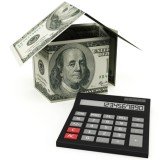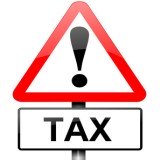Rental Property Accounting Guide - How to Calculate Rental Cash Flow
Uncover the important basics of rental property accounting today. Learn to calculate rental income and expenses with our step by step guide.
What is Rental Cash Flow?
Definition - Rental cash flow is the annual profit or loss of a rental property (before taxes).
This figure is important because it allows you to analyze how profitable your rental property is. A positive cash flow means that a property is generating profits while a negative cash flow indicates that it is making losses.
Rental property accounting allows you to examine your property expenses one by one to see how you can cut down on them and improve overall profitability.
Rental Cash Flow Formula = Rental Income - Rental Expenses - Vacancy Loss
Read on to see we mean by rental income, rental expenses and vacancy loss:
Rental Income
Rental income is actually very simple. For most landlords, it is simply the rent payments from tenants.
Income from easements are also considered as rental income (e.g. someone pays you to erect advertisements on your property).
Security deposits are not considered as income unless they're non-refundable.
Rental Expenses
Rental expenses are the total costs incurred to own and maintain the rental property plus manage tenants. For rental property accounting purposes, these expenses include:
- Mortgage payments and interest - This is typically your largest expense
- Rental property insurance premiums
- Property maintenance and repair bills
- Fees to hire third party help such as agents, property managers, contractors and lawyers
- Wages and benefits to hire property-related employees
- Utility bills - That are covered by the landlord under the lease agreement
- Miscellaneous costs such as traveling and home office expenses for property management
Vacancy Loss
Vacancy loss is the amount of time that a rental property is vacant (in a year). A vacant property means it isn't rented by any tenants and generates no rent income. A rental property with high tenant turnover rates will have a larger vacancy loss.
Vacancy Loss = (Number of days rental property was vacant / 365) x Annual Rent Income
Example - Calculating Rental Cash Flow
|
Annual Rental Income |
|
In the above example, the rental property is a cash cow that generates a profit of $4,120 every year. Once property taxes have been deducted from this $4,120, any remaining amount will go into the landlord's pockets.



